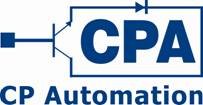There is a real danger in the specification of inverters for use in heavy-duty applications. Fresh from the manufacturer, most drives — even ones with onboard brake choppers — are not rated sufficiently for the braking demand of the application. Here, John Mitchell of CP Automation, discusses the benefits of using a universal brake chopper that works with any inverter.
Non-specialist engineers face an extremely complex task when asked to choose the correct inverter, resistor and brake-chopper combination for a project.
To help counteract this problem, CP Automation recommends using an external brake chopper unit that simplifies the process of inverter selection. Where an inverter doesn’t feature a built-in brake chopper, the new CP Automation unit, manufactured to the highest standards, supplies that functionality. It’s a universal model that works with any inverter, from any manufacturer.
However, the fact that a product is universal doesn’t simplify the selection process by itself. You also need to ensure that you choose the right integration and maintenance partner, so you are not tied into a limited range of drives from a limited range of manufacturers.
A good maintenance partner will provide an honest view of whether you already have the correct resistor and, if you don’t, supply one as part of a package to help meet your specific objectives.
For instance, if the original inverter already has a brake chopper onboard it may be that the Ohmic value of the existing resistor doesn’t meet the criteria of the new one. This can lead to damage to the drive system and its environment and in worst-case scenarios, create health and safety problems.
CP Automation's universal unit is very flexible and extremely simple. The maintenance engineer simply connects two wires from the drive’s DC Bus and two wires from the resistor, and the system is up and running.
An additional benefit of the product’s universal nature is that, should you install a brake chopper and inverter package and the inverter then fails, the end user can simply install any drive, from any manufacturer. The brake chopper and resistor package doesn’t tie the user to certain equipment, as the equivalent bought direct from the drives manufacturer would.
This means manufacturers can bring a production line back to full service quicker than if the brake chopper and resistor package worked with only one inverter model.
It is also possible to re-deploy inverters in use on less critical equipment to mission critical applications without fear of incompatibly. CP Automation's brake chopper even finds applications in motion control drive solutions, where it is equally applicable due to the common DC bus.
A DC bus drive system configuration provides users with significant advantages including design flexibility, higher efficiency and inverter power sharing as well as cost savings. These are realised through reduced cabling and fewer components — such as resistors and thermal devices.
CP Automation routinely keeps extensive stocks of brake choppers in its warehouses, with the smallest unit being 11kW continuous, 33kW peak, and the largest being 100 kW continuous, 360kW peak and users can parallel up above this to create BC units greater than 1MW.
In the drives industry there is a genuine belief that all AC inverters are created equal. This situation is exacerbated by the fact that inverters are often bought as commodity items, much like control gear. But the reality is that, at least with regard to dynamic braking, this couldn’t be further from the truth.
June 13, 2017
Subscribe to:
Posts (Atom)


